CENTAURUS Horeca
- Home
- Offer
HoReCa
Our offer of fresh and frozen fish includes:
Fish, shells, crabs... but not date mussels!
Yellowfin tuna
Tuna belongs to the tribe Thuninni, family Scombridae. This is the most famous big oily fish. In the last 20 years its tasty meat has ensured this fish the status of the most wanted and appreciated fish in the world. There are various types of tuna fish, but the most common ones are: bluefin tuna (that is considered the best), yellowfin tuna (preferred by the Japanese), skipjack or stripped tuna and albacore or longfin tuna that is also called white tuna due to its white meat.
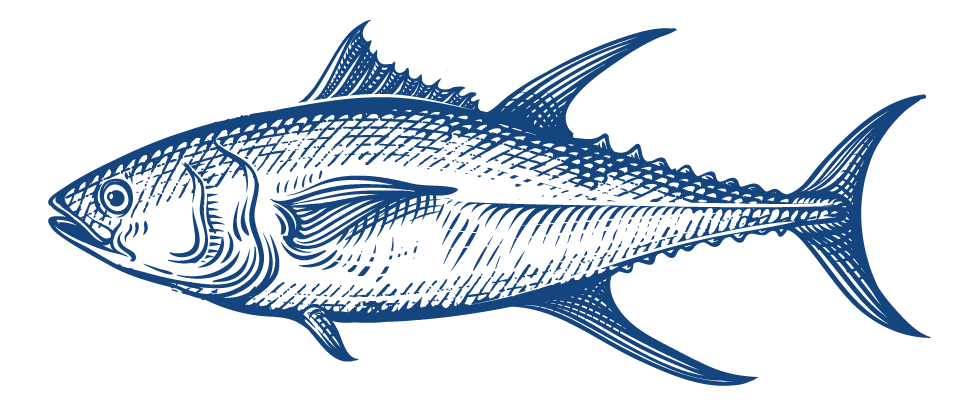
lat. Thunnus albacares
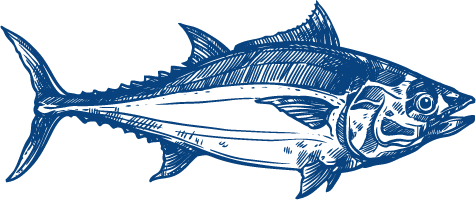
lat. Thunnus thynnus
Bluefin tuna
Tuna is large, pretty and elegant fish. Its body shape gives away fast and agile swimmer. The body is muscular, strong, spindle shaped, a bit curved in the middle and with a strong caudal fin. Upper side of the body is mettalic blue, almost balck in color whereas the belly is silver with freckles expanding in the direction of the head. The head is slightly bigger and pointy. It can grow to a maximum of 4 m in length and 600 kg in weight. The average weight reported is 12kg. There are bigger types of tuna, however.
European hake
Across our coast it has been known under many names such as ”magarčić”, ”mol”, ‘tovar”, ”murluc”, ”oslić”, and ”ugota”. The largest recorded size is 140 cm and 15 kg in the Atlantic and about 10 kg here. Hale is a huge glutton – it feeds on small fish, , cephalopods and crabs.

lat. Merluccius merluccius
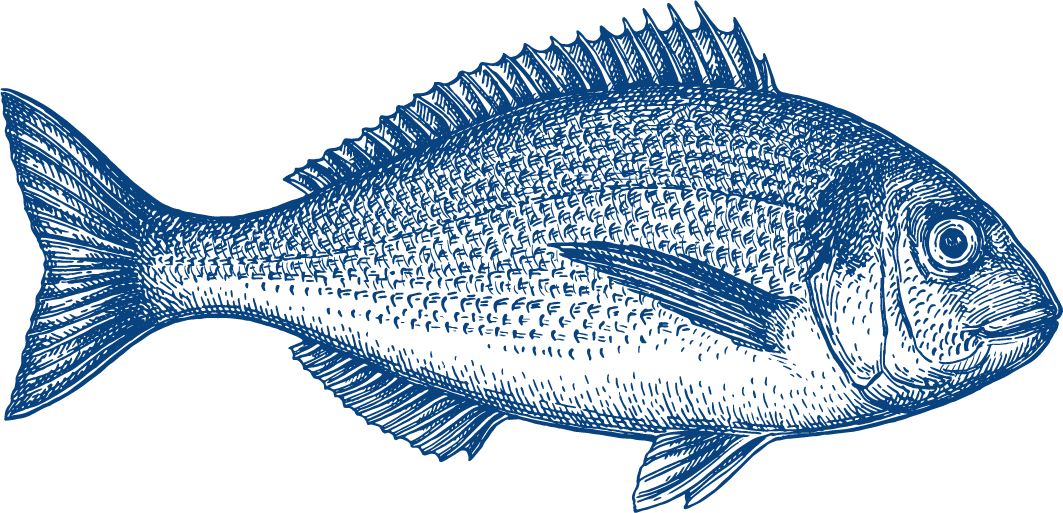
lat. Sparus aurata
Gild head bream
Gild head bream is one of the most noble types of Adriatic white fish. Its beauty is in its power, robustness, strong jaws and full lips. Its gracefull movements were praised from the time of ancient Greeks and precisely an attractive look is to be credited for its nickname Queen of the sea. The fish was named after the characteristic gold bar.
European bass
Europen bass has a very unique, distinctive look: the main body is dark bluish in color while the sides and the belly goes from silvery grey to silvery white. It can grow up to 1m in length and 14 kg. It is mostly found in the Mediterreannean, east Atlantic and around British Isles where it inhabits shallow coastal waters 2-5 m deep where the presence of the fresh water from the underwater sources can be found. However, it may go down to the depth of 80 m as well and it often enters estuaries.
By nature it’s a voracious hunter feeding on everything , mostly prawns, young eels and mullets.
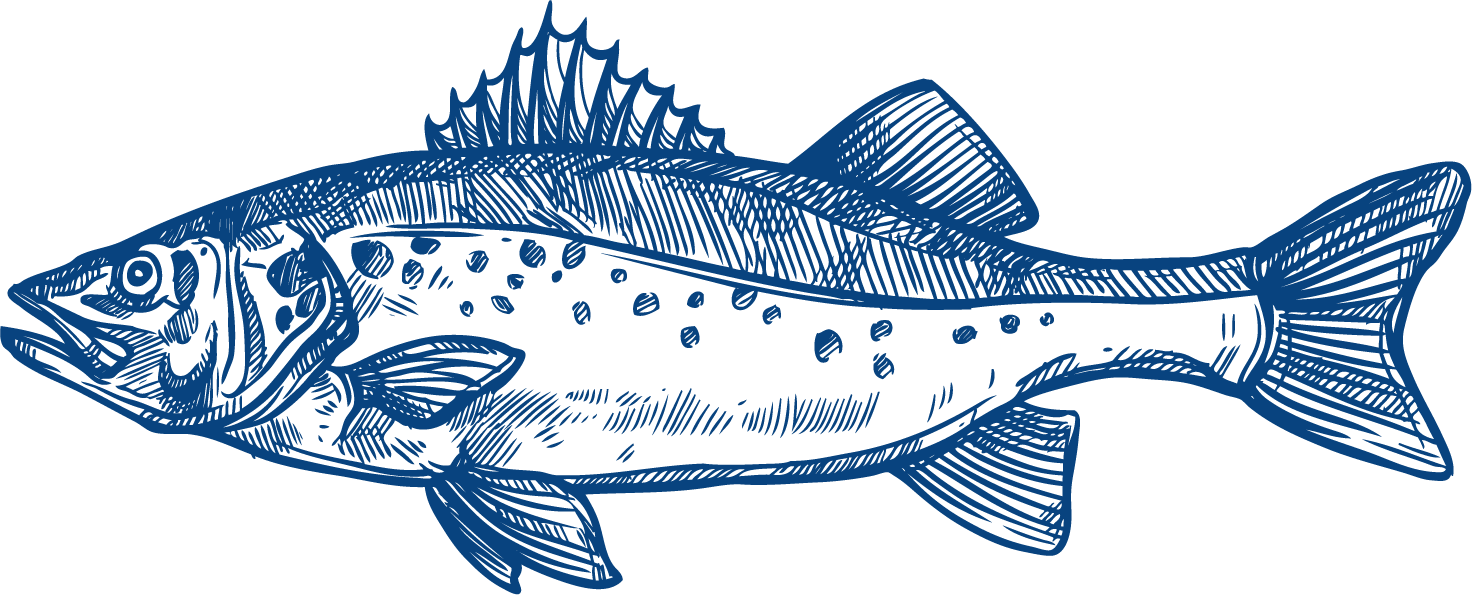
lat. Dicentrarchus labrax
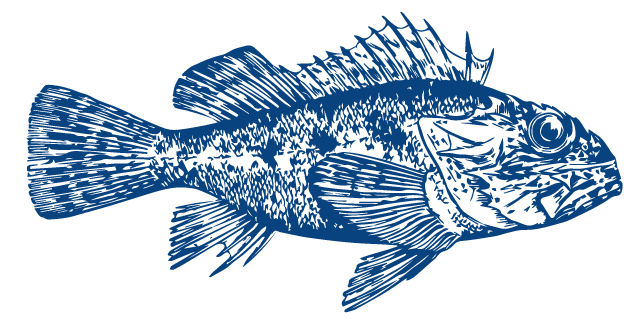
lat. Scorpaena scrofa
Red scorpionfish
Red scorpionfish ( Scorpaena scrofa) belongs to the family Scorpaenidae. Along the Croatian coast is known under the names ”škrpina”, ”logrnja”, ”skrpina”…
It has a large body and head with large jaws. The head is disproportionate to the body and covered with fringes, knots, thorns and spines which is why it is often discussed among the gourmans. Its colouration ranges from brick red to red with brownish blotches on the body. Its skin pigment changes patterns according to the environment it inabits. Hence red scrorpionfish are to be found in various shades upon being caught.
John Dory
There are many legends of its name origin. One of it mentiones St.Peter who had been catching the fish with his bare hands. According to the legend, the dark spots came as a mark of his fingers. That’s why it is called the fish of St. Peter or ”šampjer” in Italian.
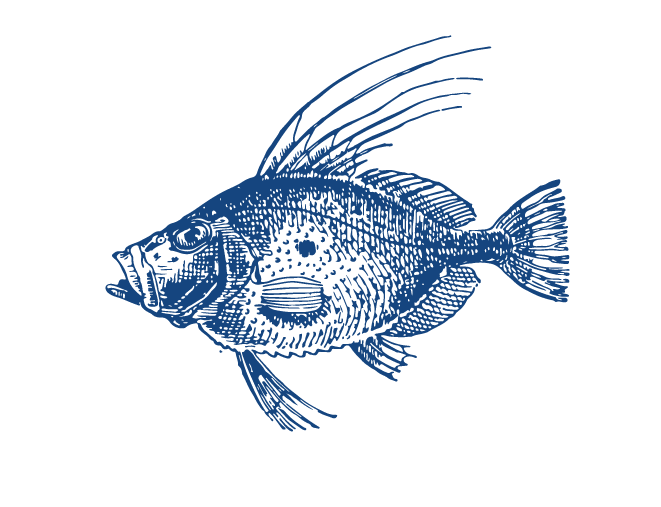
lat. Zeus faber
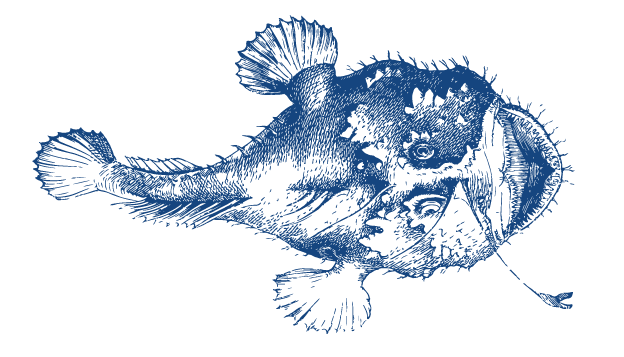
lat. Lophius piscatorius
Angler
It has a brown body with no scales. Fringed appendages in combination with unique patterns help the fish to camouflage in the muddy bottom where it lives. Along the head it has long filaments whose role is to lure other, smaller fish. A fun fact about angler is that sometimes it’s able to catch even a seagull! It’s an excellent hunter that lives at the depth of up to 1000 m. It grows up to 2 m in length and can go up to 60 kg (the biggest reported specimen had 58 kg).
Sole
Sole (lat.Solea) belongs to the flatfish family Soleidae together with flounder and turbot. Locals here know it under names ”švoja”, ”zalistak”or ”platuša”. It can grow up to 66 cm in length and it weights around 1 kg. Its average hunting weight is from 0.20 – 0.25 kg. It lives on muddy and sandy bottoms along Adriatic but mostly they are to be found along the west coast of Istria. It lives in shoals but they are scattered. It’s active at night whereas during the day it burries itself in the sediment. It is recognizable by its wavy movements. It is caught by mesh pashalere.

lat. Solea vulgaris
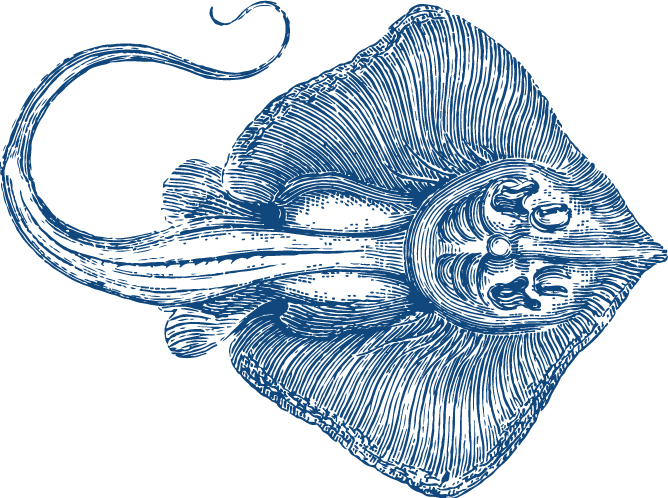
lat. Rajiformes
Devilfish
Devilfish (Rajiformes) is flattened cartilaginous fish distinguished by a generally flattened body and grately enlarged pectoral fins that reach as far forward as the sides of the head what makes the body look even wider. They have the shape of a leaf or a diamon shaped plate which is why they are often popularly called sea leaves. They swim in wavy movements produced by pectoral fins. However, most of the time they are burried in the sediment as they are poorly mobile. Its tail is extremely narrow and whip like at most types with dorsal fin laid all the way back.
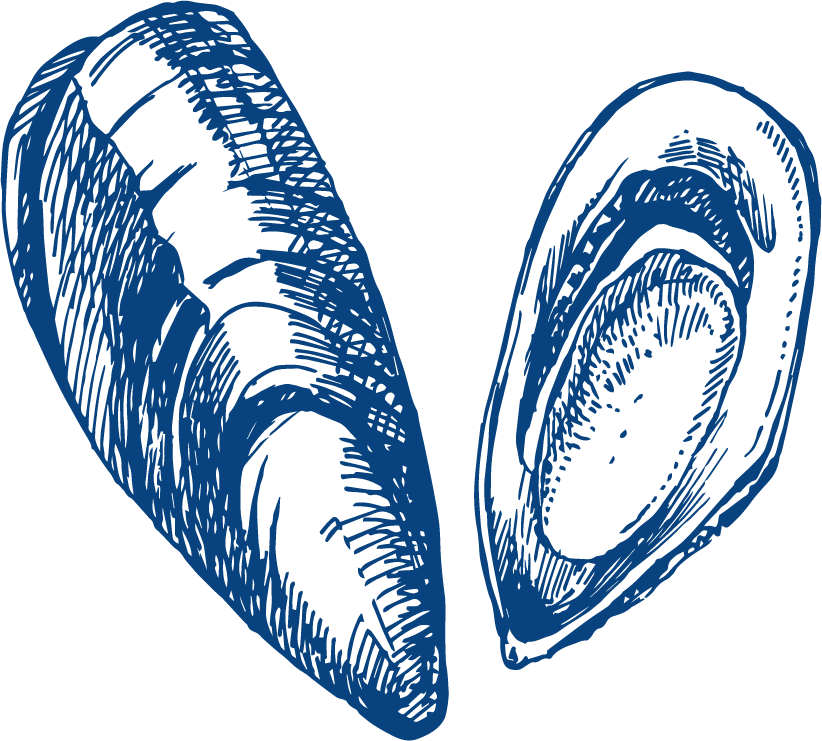
lat. Mytilus galloprovincialis
Mussel
Mussel has two identical, oblong valves . The shell is dark blue, almost black from the outside and fair pearly colored inside. The two are firmly connected by elastic hoop 6 -8 cm long that hides soft tissue. They live in clusters on underwater cliffs, pillars or hang connected by fine strings secreted by one of its internal glands.
Oyster
European flat oyster (lat.Ostrea edulis) is a species of oyster that belongs to the family of Ostreidae. The muscle is placed inside of two assymetric valves. The left one is concave and fixed to the substratum whereas the right one is flat and connected to the left one by a strong band. It’s oblong and has a shape of a heart with serrated edges of the shell whose color varies from stone grey to white- grey. It can grow up to 13 cm in length. It can live only if fixed to the hard, rocky surface and in rare clusters. It feeds on plankton. Its biggest enemies are starfish, spiny dye-murex, other crabs and fishes -especially gilt head bream.
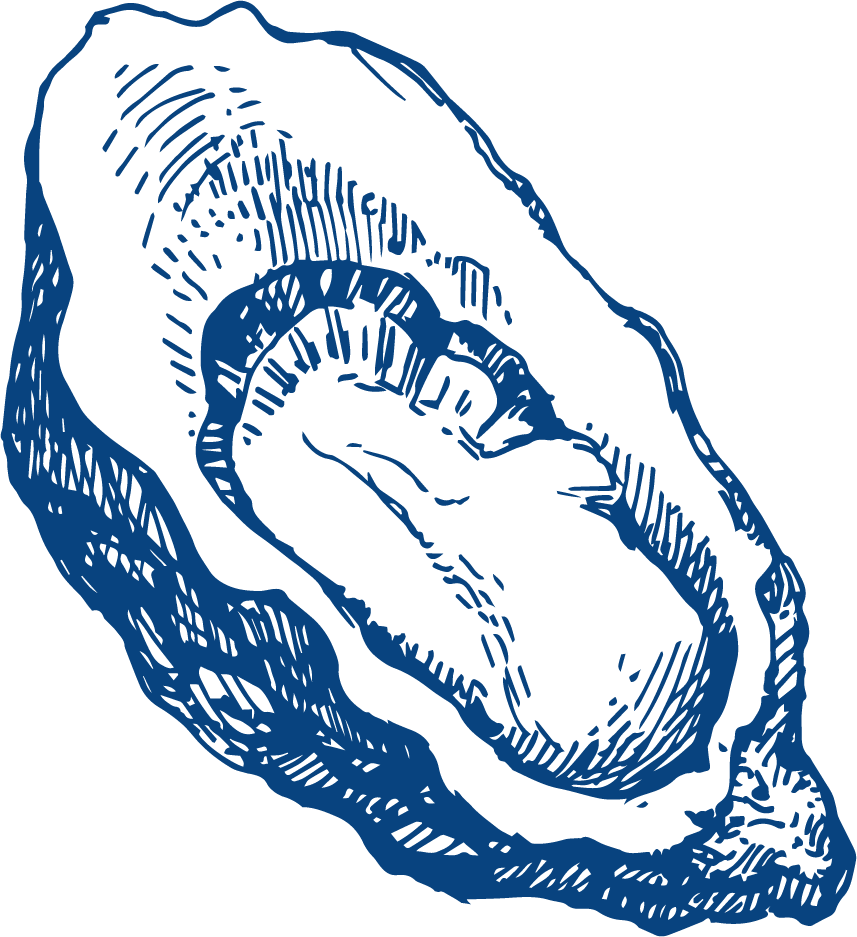
lat. Ostrea edulis
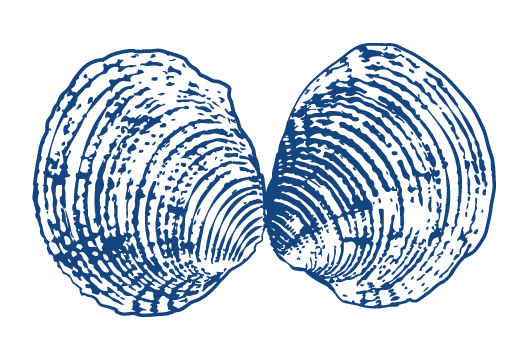
lat. Venus verrucosa
Warty venus
Warty venus belongs to the family of Veneridae just like many well known Adriatic shells like smooth clam. Warty venus, a typical type of this family, spends its lifespan in one place burried in mud. How deep it will go depends on the day, but most commonly it’s only a couple of centimeters under the surface.
Noah's ark
The valves of Noah’s ark are covered with fine sculptured ribs. They are brown or greyish red and stripped with light zigzag stripes. They can reach maximum up to 10 cm (measured by the longest base) and 6 dkg. Average types have cca 2 dkg and 6 cm.
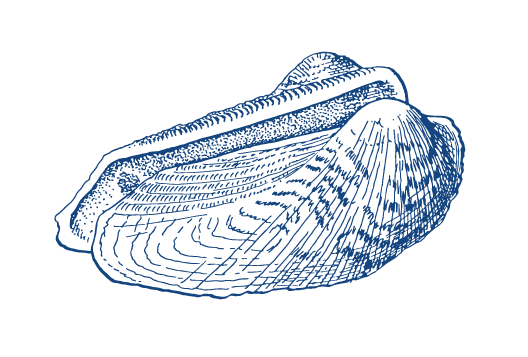
lat. Arca noae
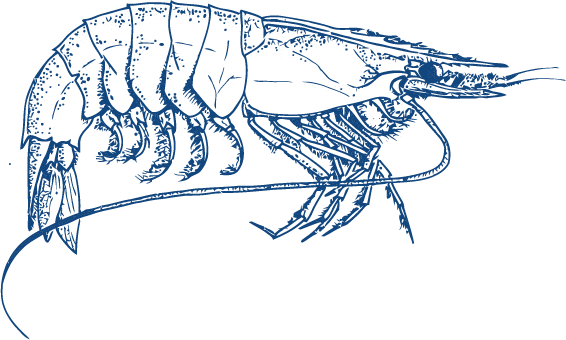
lat. Parapenaeus longirostris
Prawns
There are many types of prawns but the most common ones in our area and Mediterrannean diet is deep-water rose shrimp (lat. Parapenaeus longirostris).
It’s greyish pink in color, sometimes green and even dark brown. While alive, its body is streaked with brown spots. It feeds on small, benthic organisms. It lives on sandy and muddy bottom up to 500m deep. During the day it is burried in the sediment.
Shrimps
Shrimps are present in the Mediterrannean and Adriatic. The largest populations have been reported to be around Jabuka island, Velebit pasage and Kvarner. Due to climate, cleanness of the sea and temperature that allows the development of a thinner carapace and smaller muscle tissue Adriatic shrimps are highly praised. They inhabit shallow waters and are caught by traps not to destroy the gentle tissue as it frequently happens with the trawling net.
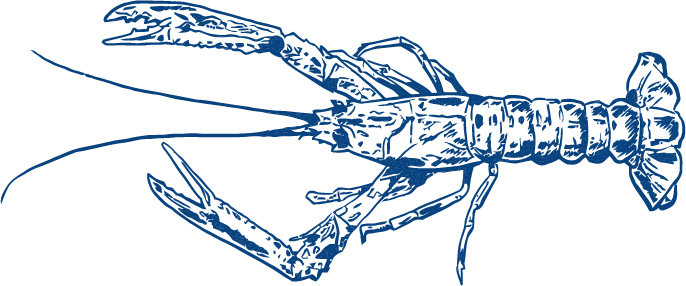
lat. Nephrops norvegicus
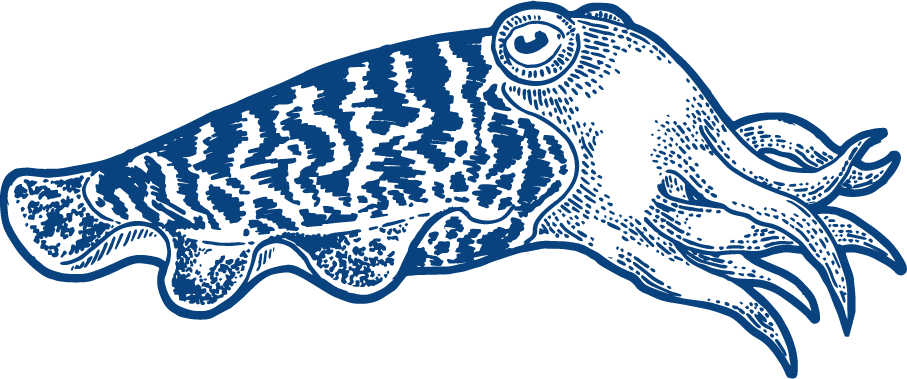
lat. Sepia officinalis
Cuttlefish
Our common cuttlefish (Sepia officinalis) grows up to 60 cm and it weights slightly over 3 kg. It lives in the Mediterrannean and east Atlantic and it can greatly be found in all European coastal countries. Due to its unusal appearance they were always cosidered mythical creatures and they resemble only squids. Cephalopods are in its appearance very unique as they are a special branch of the evolution.
Squid
Squid is localy most famous member of cepalophods. It can live maximum 3 years and during that time it can grow up to 1m in lenght and reach up to 3 kg.
It has a shape characteristic for cepalophods with the head clearly separated from the mantle by the neck passgae. Rear part of the conical-spindle hydrodinamic body has two elongated traingular fins ( 2/3 of the body’s length big) located laterally. They produce vawy movemens squid uses to slowly move around. When swimming fast, they are glued to the body and wrap the mantle.
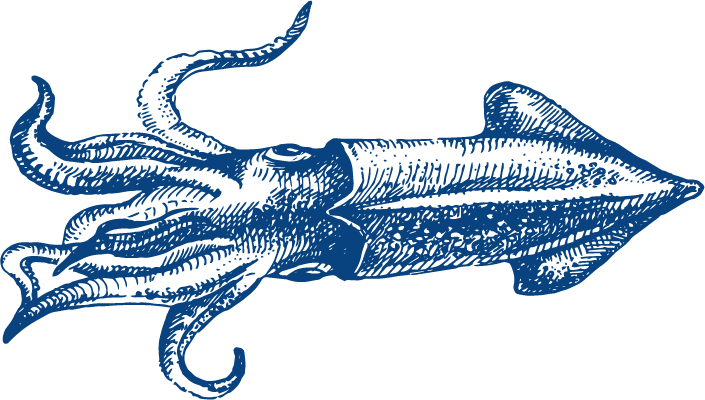
lat. Loligo vulgaris
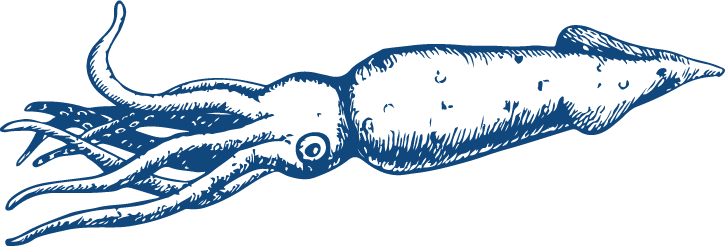
lat. Todarodes sagittatus
Illex
Illex, know also as shortfin squid, is a cepalophod from the Adriatic that resembles squid in its appearance. However, the two are not the same. Unlike squid, illex is dark pink, smaller and thus has less muscle that’s more tough to eat. Considering it’s more affordable and largely represented in the Adriatic it can always be found on the local markets.
Octopus
Octopus belongs to the family of Octopodidae and stands for the largest among Adriatic cepalophods. The largest quantites have been reported in the Mediterreannean but there’s plenty in other seas as well. It lives hidden in between the crevices of the rocks. Its whole body is one strong muscle wrapped in mucous skin. On the body there are a large head and eight symetrical limbs containing two rows of suckers.
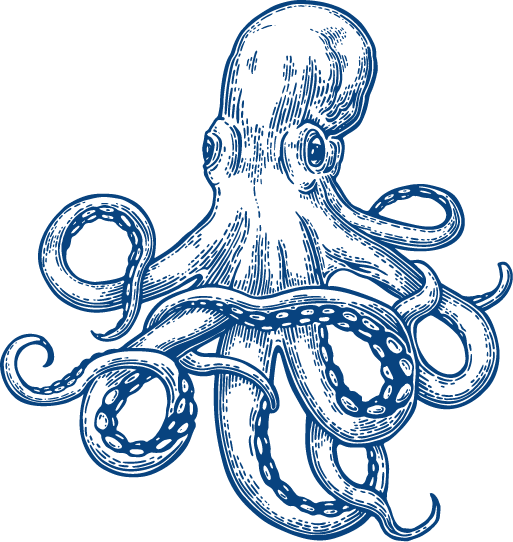
lat. Octopus vulgaris
Yellowfin tuna

lat. Thunnus albacares

lat. Thunnus thynnus
Bluefin tuna
European hake

lat. Merluccius merluccius

lat. Sparus aurata
Gild head bream
European bass

lat. Dicentrarchus labrax
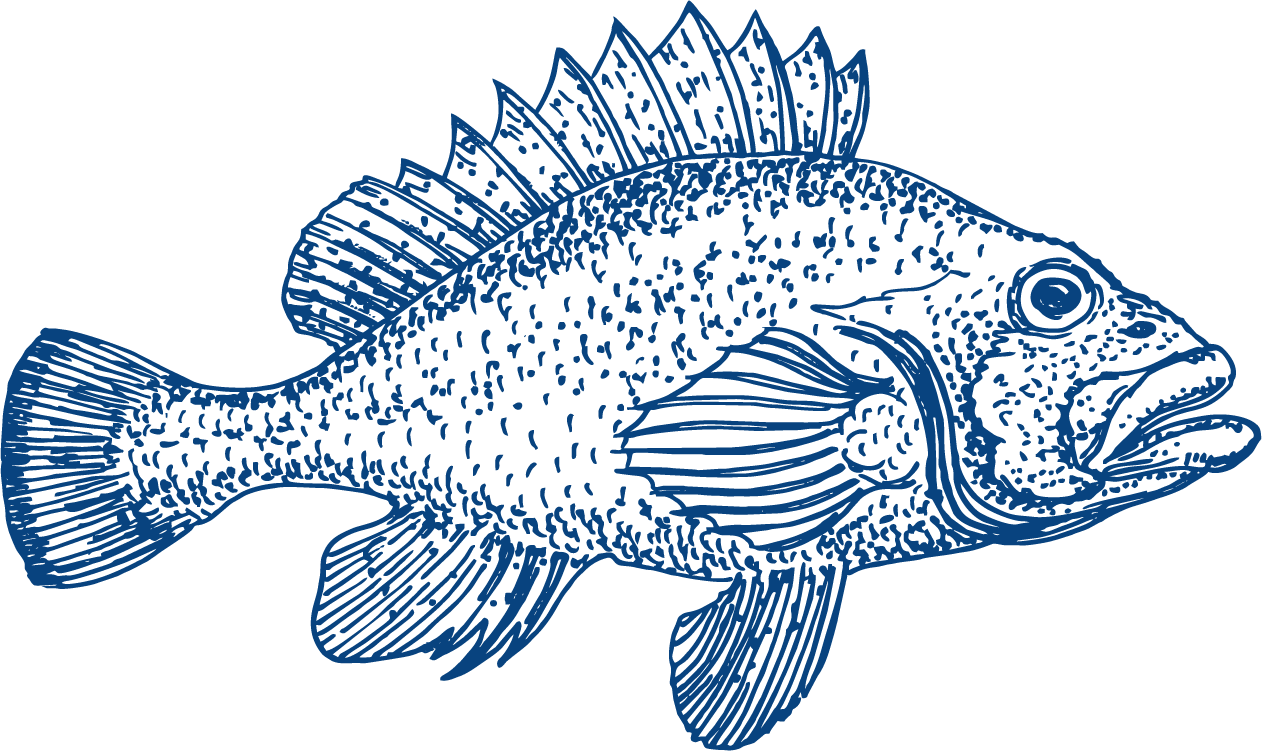
lat. Scorpaena scrofa
Red scorpionfish
John Dory

lat. Zeus faber

lat. Lophius piscatorius
Angler
Sole

lat. Solea vulgaris

lat. Rajiformes
Devilfish
Oyster

lat. Ostrea edulis

lat. Mytilus galloprovincialis
Mussel
Noah's ark

lat. Arca noae

lat. Venus verrucosa
Warty venus
Prawns

lat. Parapenaeus longirostris

lat. Nephrops norvegicus
Shrimps
Squid

lat. Loligo vulgaris

lat. Sepia officinalis
Cuttlefish
Illex

lat. Todarodes sagittatus

lat. Octopus vulgaris
Octopus
Gastro ribarnice Brač make our retail chain. In 11 owned markets in the region we offer fresh fish, rich selection of frozen, dry, marinated, salty and delicacy products. Gastro section is located in the headquarters on Poljud. There you can choose between abundance of ready meals prepared in innovative way by combining traditional, local recipes with the ones from abroad. All is served in a modern way to bring the meals closer to the mass. We base our offer of salty and marinated products, vine and delicacies in cooperation with family business from the region to help small business prove their quality and market abroad.


FIND US AT THE FOLLWING ADRESSES
FISHMARKET POLJUD:
VIII Mediteranskih Igara 9/1, Split
Phone: 021/380-668
Customer info: 095/115-5550
Monday – Saturday: 07:00 – 20:00 h
FISHMARKET BELVEDERE:
Vukovarska ulica 148b, Split
Phone: 021/473-859
Customer info: 095/311-1555
Monday – Friday: 07:00 –14:00 h
Saturday: 07:00 – 12:00 h
FISHMARKET CITY CENTER ONE:
Vukovarska ulica 207, Split
Contact: 099/473-6180
Monday – Saturday: 08:00 – 22:00 h
FISHMARKET BRDA:
Mostarska ulica 34 (u sklopu Ribole), Split
Contact: 099/758-6330
Monday – Friday: 07:00 – 14:00 h
Saturday: 07:00 – 12:00 h
FISHMARKET SOLIN:
Ulica kralja Zvonimira 103, Solin
Phone: 021/210-460
Customer info: 091/444-5517
Monday – Friday: 07:00 – 14:00 h
Saturday: 07:00 – 12:00 h
FISHMARKET KAŠTELA:
Dr. Franje Tuđmana 438 (u sklopu Ribole), Kaštel Gomilica
Contact: 091/621-9873
Monday – Friday: 07:00 – 14:00 h
Saturday : 07:00 – 12:00 h
FISHMARKET OMIŠ:
Četvrt Ribnjak 17 (u sklopu PC Studenac),
Omiš
Contact: 091/444-5526
Monday – Friday: 08:00 – 14:00 h
Saturday: 08:00 – 12:00 h
FISHMARKET BRELA:
Trg žrtava Domovinskog rata 1 (u sklopu Ribole),
Brela
Contact: 091/444-5004
Monday – Friday: 07:00 – 14:00 h
Saturday: 07:00 – 12:00 h
FISHMARKET STROŽANAC:
Strožanačka cesta 25 (u sklopu Ribole), Podstrana
Phone: 021/334-115
Customer info: 099/111-1155
Monday – Friday: 07:00 – 14:00 h
Saturday: 07:00 – 12:00 h
AMARE
Vinkovačka 2 (tržnica “Sućidar”)
Contact: 021/645-097
Monday – Friday: 07:00 – 14:00 h
Saturday: 07:00 – 12:00 h
FISHMARKET MALL OF SPLIT:
Josipa Jovića 93, Split
Contact: 091/613-2458
Monday – Sunday: 08:00 – 22:00 h
Gastro fisch Brač
Zollergasse 12 | 1070 Wien, Austria
Contact: +43 676 4629925
Web: www.gastrofisch.at





